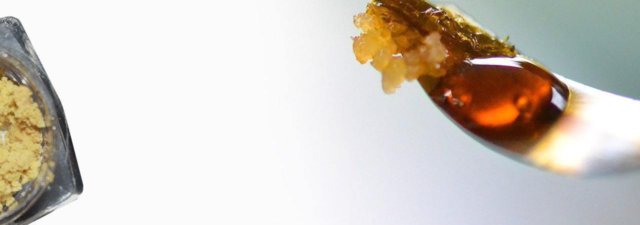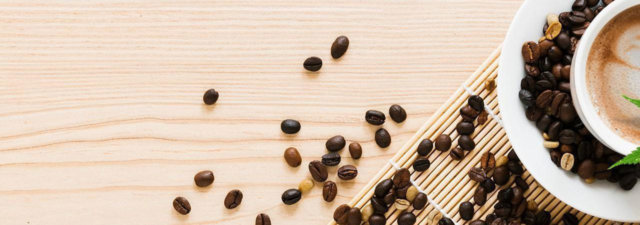Everything you need to know about PHO…
It seems as if humankind is on a never-ending mission to create the most potent forms of cannabis possible. We regularly breed new strains with over 20% THC, an unthinkable level of potency a few decades ago. Furthermore, cannabis concentrates are becoming more popular by the day.
Concentrates, as the name suggests, provide a way of packing as many cannabinoids as possible into the smallest amount of space. This process ensures a product that is pure, clean, and packs one hell of a punch. With some concentrates reported to contain as much as 90% THC, these products are certainly not for the fainthearted!
Today, we will look at PHO (propane hash oil) wax, a marijuana extract that is currently making significant waves on the scene. But what is so special about PHO concentrate, and is it worth the hype? Read on to find out…
What Is PHO Wax?
The easiest way to define PHO is to call it a type of marijuana extract. The words ‘extract’ and ‘concentrate’ are often used interchangeably in the world of weed. However, there are some very subtle differences.
Technically speaking, you create extracts by using a solvent to draw out the beneficial compounds from the plant material. Concentrate production, on the other hand, involves exposing plant material to extreme heat and pressure. However, since both methods yield a product that is highly concentrated and powerful, most people don’t get too hung up on the terms.
According to the above definition, though, PHO is an extract rather than a concentrate. This is because it uses propane, a hydrocarbon solvent, to extract the cannabinoids and terpenes from marijuana flower.
PHO is very similar to BHO, a cannabis extract made using butane as the solvent. Butane is traditionally the first choice ingredient when using hydrocarbon extraction techniques, but that may be about to change. PHO appears to have several advantages over BHO, especially during the manufacturing process. Let’s take a closer look.
PHO vs. BHO Concentrates
PHO and BHO are similar in many ways. They both use hydrocarbons as a solvent to extract cannabinoids and terpenes from weed. Cannabinoids are compounds such as THC and CBD, whereas terpenes are aromatic oils that influence the smell and taste of the plant.
As you probably know, THC is responsible for the typical marijuana ‘high’ while CBD is associated with numerous health benefits. Terpenes are also thought to have a whole range of benefits and when combined with cannabinoids, may contribute to the ‘entourage effect.’
Both PHO and BHO are known to effectively extract cannabinoids without causing too much damage to the terpenes in the plant. This process is advantageous since the compounds in weed are thought to work better in combination than in isolation.
However, PHO could preserve even more terpenes than BHO since you manufacture it under higher pressure. As a result, PHO not only tastes better than BHO, but it may have more health benefits, too.
Another advantage of using propane rather than butane to extract cannabinoids is that it is easier to remove the residual solvent at the end of the process. This means less chance of contamination and an end product which is both safe and pure.
Finally, propane is cheaper than butane, meaning that manufacturers can create a similar product at a significantly reduced cost. These savings should (in theory, at least) filter down to consumers to make cannabis concentrates more affordable in the long run.
PHO vs. BHO – Does Propane Hash Oil Lose Out in Any Way?
One possible disadvantage of PHO compared with BHO is versatility. Butane extraction methods can create a wide variety of concentrates with different consistencies. Some of the most common forms of cannabis concentrate made in this way include:
- Oil: A liquid concentrate with varying degrees of viscosity
- Shatter: A glass-like substance which shatters easily
- Crumble wax: A concentrate with a soft, crumbly texture
- Budder: A soft substance with a texture similar to butter
The type of concentrate produced by butane extraction can change depending on the specific techniques used during the extraction process. However, with propane extraction, the end product is almost always more similar to budder.
How Is PHO Wax Made?
PHO and BHO wax are both made similarly. Liquid propane or butane is ‘washed’ over the plant material in a closed-loop system to extract the cannabinoids and terpenes. The solution is then filtered to remove impurities, and the solvent is retrieved and recycled by exposing it to heat.
Finally, the concentrate is ‘purged’ in a vacuum oven to remove any residual solvent. At this stage, the extract is treated to create different types of end products. For example, you can whip it to make wax or spread it on a sheet to create shatter.
Hydrocarbon extraction is hazardous due to the explosive nature of the chemicals used. Only professionals with the correct training and equipment should attempt it. Do not try it at home!
If you fancy trying your hand at making concentrates, ethanol extraction is a much safer choice. However, there are still some risks involved, and you should always exercise caution.
How to Use PHO Wax
People generally use cannabis concentrates such as PHO wax to create dabs. Dabbing is a method of vaporizing extracts using a setup known as a dab rig. A dab rig is a type of water pipe. It looks very similar to a traditional bong, but instead of having a bowl where you pack your dried herb, it has a ‘nail.’
This nail is made from a heat-proof material such as titanium or quartz. You heat it using a butane lighter or blow-torch until it is glowing red and allow it to cool very slightly before adding the dab. Some dab rigs come with an e-nail which heats up to the right temperature automatically and removes some of the guesswork.
Once your nail is heated, you drop on your dab and the concentrate is vaporized. Next, inhale it as you would when using a bong. Assuming you have a pure, high-quality product, your wax should evaporate completely when you inhale.
Since PHO wax has a sticky, butter-like texture, use a dabbing tool to place it on the nail. It not only prevents you from burning your fingers but also stops you from wasting precious wax by smearing it on your hands!
Although dabbing is the most popular way of using PHO wax, you can use it in the same way as any other marijuana concentrate. Use it to top off a bowl, add it to a joint (a method known as twaxing), or create more-potent-than-average edibles.
If you are using PHO wax for the first time, go slowly as it is incredibly potent with a THC content of anywhere between 70% and 90%! While this is great if you have a chronic medical condition or a high tolerance to weed, overindulging is something you could live to regret.
Final Thoughts on PHO Wax
PHO wax is the latest trend in the world of marijuana concentrates. Like its better-known relative BHO wax, it is pure, highly potent, and has a fantastic terpene profile. However, PHO also differs from BHO in several ways, most notably in its texture.
PHO wax has a buttery consistency, which makes it ideal for dabbing, but you can use it in other ways. Thanks to its versatility and strength, it is likely that PHO wax is something we will see a lot more of in the future.
Have you ever tried PHO wax? If so, we would love to know your thoughts. Is it worth the hype or just a fad? Let us know what you think in the comments below.





![Moon Rocks: What Are They and How Do You Smoke Them? [Answered]](https://wayofleaf.com/wp-content/uploads/2018/06/mj_moon-rocks_1920-640x225.jpg)
![What Is a CBD Tincture? [Explanatory, Tell-All Guide]](https://wayofleaf.com/wp-content/uploads/2018/06/wol_1920x450-72-640x225.jpg)




![What Is CBD Chocolate? [We Answer All Your Questions]](https://wayofleaf.com/wp-content/uploads/2019/11/what_is_cbd_chocolate-min-640x225.jpg)
